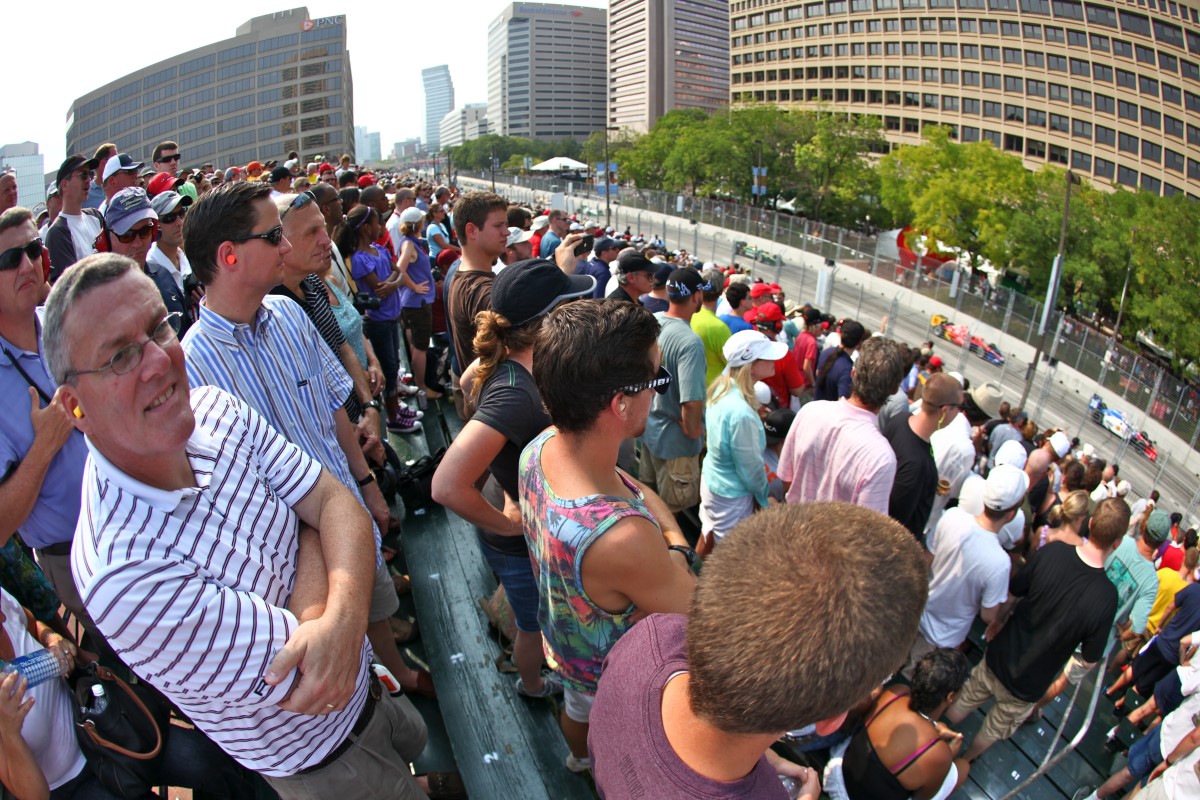Road to second Baltimore Grand Prix full of twists
 |
| Revenue from big crowds could not overcome the startup costs a street race like Baltimore has |
It was a party unlike any Baltimore had ever hosted during the usually sleepy Labor Day weekend, with candy-colored cars speeding noisily around the Inner Harbor to the delight of crowds drawn to the city's inaugural Grand Prix.
But behind the scenes, event promoter Baltimore Racing Development was falling into financial and organizational disarray. Two months later, the city faces something of a morning-after dilemma: Does Baltimore continue dancing with BRD, which owes $1.5 million in taxes and unpaid services, or change partners for future races?
"They're not at home in their living room playing with toy cars," said Deputy Mayor Kaliope Parthemos, the city's point person for the Grand Prix. "If they can't get it together, they need to get out of the way or let someone else run it."
The city is increasingly impatient with BRD. As much as city officials want the Grand Prix to become an annual Labor Day tradition, they are wrestling with budget shortfalls that threaten to close recreation centers. Observers say it is simply the wrong time to use taxpayer money to cover debts of a private company that was supposed to produce the IndyCar race and related events.
"That would be a hard sell in today's environment for sure," said Chris Ballestra, managing director of development for St. Petersburg. The Florida city experienced multiple fits and starts in trying to establish a street race, going through different promoters and racing leagues before settling on a group that has brought a grand prix to town for the past seven years.
"The public is really in love with the event," Ballestra said. "But if we had to be closing libraries or schools or rec centers, my guess is the conversation would quickly change."
Baltimore Mayor Stephanie Rawlings-Blake, who expended much political capital with her staunch support of the race, has threatened to break the city's contract if BRD does not pay its debt by Dec. 31.
"The ball's in their court," Rawlings-Blake said of Baltimore Racing Development. "We made it clear that they need to settle up and pay the bills that are owed. This was a really magnificent event that needs strong management to make it successful in the future."
The city faces a tough choice: either help BRD shore up its finances and operations, and trust that it can turn itself around in time to lay the groundwork for the 2012 race, or start over with a different group. And that has to happen in a fairly short span of time, given the complicated nature of the three-day festival, with multiple races, drivers, entertainment venues and other attractions.
The city "has to decide if it wants to take the risk of this happening again," said Lisa Delpy Neirotti, an associate professor of tourism and sports management at George Washington University.
Despite BRD's problems, Neirotti expects the city will want to build on the Grand Prix's successes — the event drew some 160,000 spectators and splashed images of a sparkling downtown over a nationwide cable TV broadcast — even if it has to forgive some of the company's debt.
Still, the depth of Baltimore Racing Development's troubles cannot be underestimated. It is currently without a CEO and has been sued by investors and vendors. In addition to the $1.5 million it owes the city, the company missed a $470,000 loan payment to the Maryland Stadium Authority, which drew the money from BRD's escrow account.
In retrospect, many of the financial problems may have been predictable, say those familiar with the staging of such events. Major sporting events generally need a title sponsor to shoulder a good portion of production expenses, but Baltimore Racing Development failed to land one.
"In order for it to work, it's not just about attendance," said Thomas H. Regan, who was a consultant to a grand prix held in Denver and now is an associate professor of sport and entertainment management at the University of South Carolina. "It's about the sponsorships, and the people with the money spending the money."
St. Petersburg's Ballestra credits having Honda as the title sponsor of the city's race with keeping public expenditures down. He estimated that the city spends about $150,000 a year on the race, not including staff time.
By contrast, part of Baltimore Racing Development's current debt to the city is $500,000 for police and other services, and $250,000 for firefighter costs that the company failed to anticipate. The rest of the $1.5 million it owes, the city says, is in unpaid event taxes and fees.
Even with Honda's sponsorship, though, it took a couple of years for the St. Petersburg race to turn a profit for its promoter, according to news accounts. Ballestra said the promoter "is always the critical part" in producing a successful event.
"It can be the Achilles' heel," he said. Ballestra was worried when his city's race promoter went through a partial ownership change a couple of years ago. But the group kept its "boots-on-the-ground" manager and his team largely intact, and Ballestra doubts racegoers even noticed a change.
"It wasn't even a hiccup," he said. Baltimore Sun
